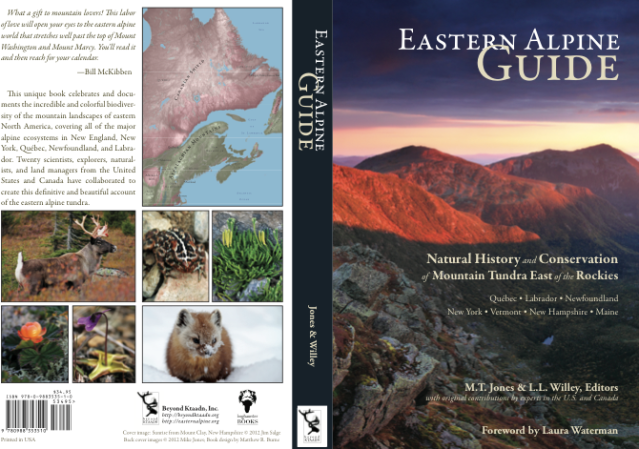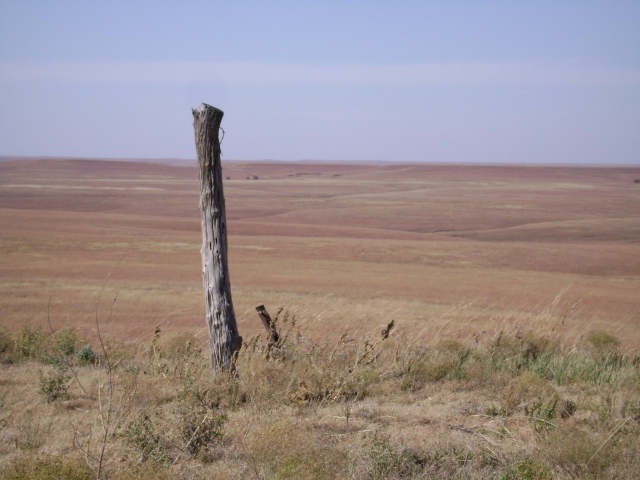Few people in the Northeast have heard of, let alone visited, the Sky Islands of extreme SE Arizona and SW New Mexico. They’re a vast, complex series of steep ridges and peaks that form a meeting point between the Sierra Madres to the south and the Rockies to the north, and between temperate and tropical plants and animals as a result. Jaguars, parrots, and many tropical mountain plants co-exist with the arid temperate species of the southern Rockies. As such, they’re a completely unique ecological crossroads, with major historical and spiritual significance to the local Apache Indians and other indigenous peoples in the region.
And, as it turns out, they have an analogue of sorts in the Northeast US: the scattered alpine peaks and plateaus of the northern Appalachians and Canadian Shield that rise above treeline. These places are on my mind because I’ve just received of one of the most extraordinary natural history books I’ve ever laid eyes on: the newly published Eastern Alpine Guide, co-authored by Mike Jones and Liz Willey, and published by their eastern alpine conservation non-profit, Beyond Ktaadn.

This book is the real deal, everyone. It’s breathtaking. I think it rivals Liz Thompson and Eric Sorenson’s Wetland, Woodland, Wildland for the most revelatory natural history & conservation book published about the Northeast in recent years.
WWW and EAG are very different books, but they share a common approach as “ecological field guides.” They’re field guides to places rather than species. And for people (including the author of this blog) who spend a lot time looking at the world through a “stories of place” lens, the explanatory power that high-quality place-based writing and images can have is just incredible.
A few nuggets I’ve picked up so far from the EAG:
–The high-elevation alpine and subalpine islands of the east aren’t just ecological rarities. They’re also southern refugia for many primarily northern (and in many cases, arctic/subarctic) species. And this really matters in context of climate change, because of the peculiarities of how climate and weather affect high-elevation places. Because of much higher frequency of cloud cover than lower-elevation places, as well as some other factors, high-elevation sites seem to respond more slowly to climate change than high-latitude sites with similar suites of species. The atmosphere, in essence, is “buffering” the alpine and subalpine islands from warming as quickly as lower-elevation landscapes. So species retreating north with climate change might be able to find refuge on these isolated peaks just as they appear to have in past periods of warming – which is an obvious, big, important argument for their conservation.
–There is a substantial (~140 animal) herd of woodland caribou, today, south of the St. Lawrence Seaway. They live in the highest peaks of the Gaspésie peninsular mountains in eastern Quebec, hearteningly close to mountain landscapes I know in New England. Caribou, as students of historical ecology may know, once ranged throughout far northern New England, and probably in the Adirondacks as well. The last caribou in northern New Hampshire was sighted in the winter of 1898 near the Connecticut Lakes, and the last sighting in Maine was in the 1920’s. But the Gaspésie are only 300 miles as the raven flies from Ktaadn. It’s not too far-fetched to imagine their return.
–The EAG includes a brief but very interesting and clear discussion of New Hampshire’s pyric balds – subalpine peaks who’ve been stripped of their vegetation and soil by catastrophic fires. These mountains (some of which can also be found in other Northeast states) are lower-elevation than the climatic treeline found in the White Mountains, but many have retained a pseudo-alpine treeline ever since the fires and some now host a small set of alpine/arctic plants. Mount Monadnock is the best-known example, but there are others, including Mt. Cardigan, Mt. Chocorua, and Mt. Kearsarge.
–Finally, the very last chapters of the book contain some absolutely astounding information about the Torngat mountains of northern Labrador. I won’t reprint the truly mind-blowing parts here – you’ll have to read the book to find out! But they’re one of the most inaccessible places in all of North America, and have an ecology that’s completely unique on the continental Atlantic coast.
On a deeper level, the EAG inspires me about what books can do in a more and more “settled” and data-rich world. They can, if the alchemy between book and reader is right, access genuine wonder and awe. As such, I’m giving this book my highest, strongest recommendation, and especially to people apprenticing themselves to the natural world anywhere in the Northeast. It will expand your understanding of the larger place you call home.



